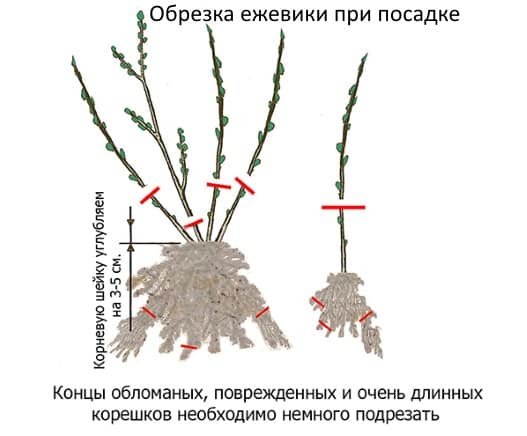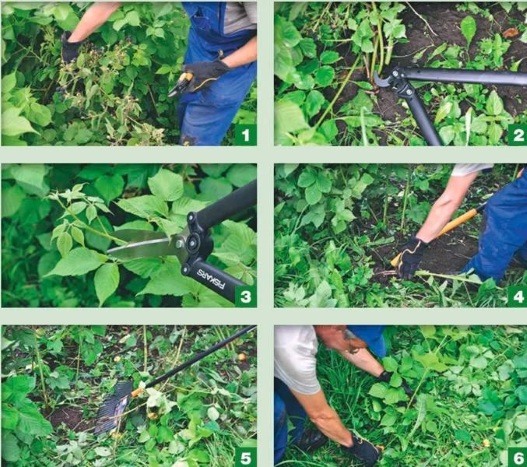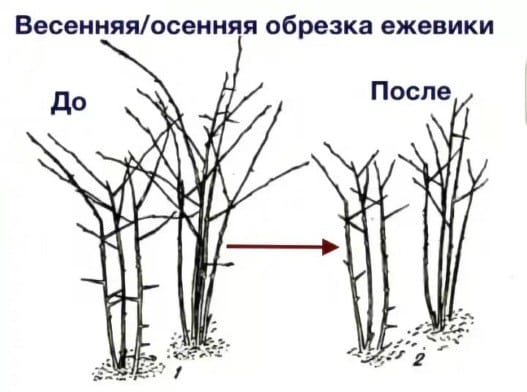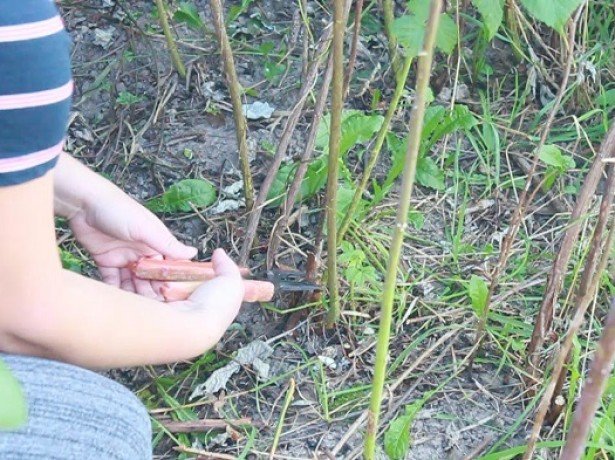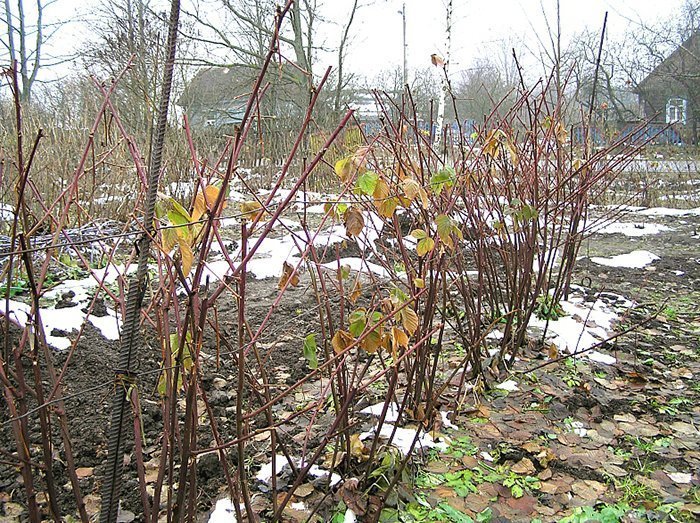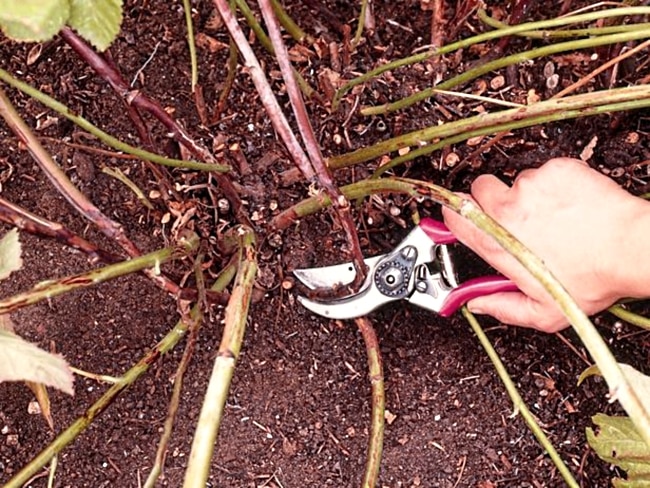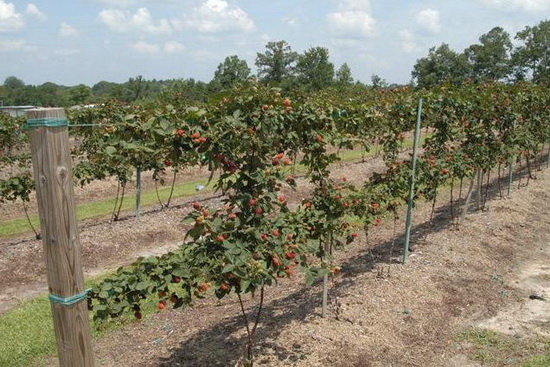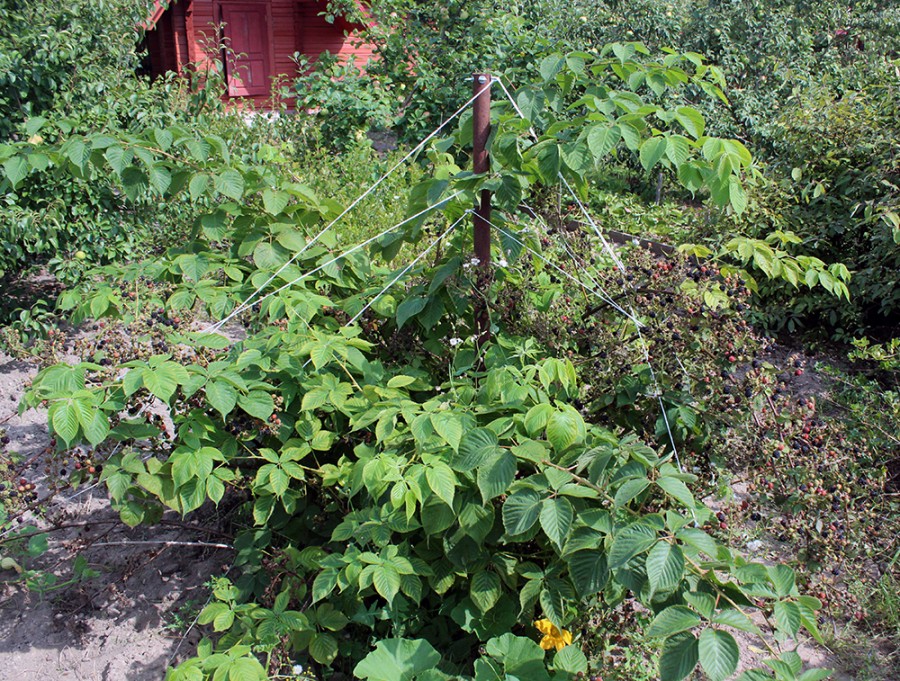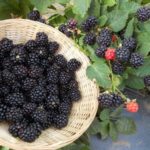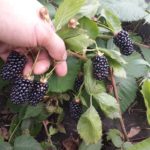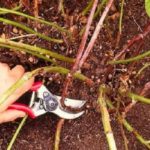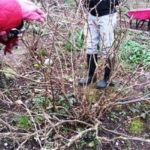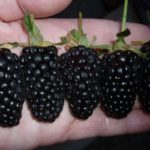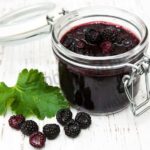In order for blackberries to bear fruit well next season, proper pruning is required. The procedure will also contribute to the formation of a beautiful appearance and increase the size of the fruit. If fruit-bearing branches are not removed annually, the plant will eventually stop producing fruit. Therefore, it is important to know everything about pruning blackberries, when and how to do it correctly.
- The benefits and necessity of pruning
- What to look for
- Timing for pruning garden blackberries
- in spring
- In summer
- in autumn
- Blackberry pruning patterns for beginners
- Upright varieties
- Creeping varieties
- Remontant varieties
- Thornless varieties
- Blackberry garter after pruning
- Fan
- Ropeway
- Wave
- Feeding blackberries after pruning
The benefits and necessity of pruning
Blackberries are biennial plants. This means that only branches from last year can bear fruit and only once. New shoots grow in the summer, gain strength and prepare for fruiting next season. Therefore, when the berries are collected, the old branches become unnecessary. They shade young shoots and interfere with their development. If you do not trim them in time, then next season the fruits will become small and it will be very difficult to get to the berries.
To ensure a good harvest, pruning should not be neglected, since the presence of unnecessary shoots will contribute to the development of diseases and a decrease in the volume of the harvest.
What to look for
Blackberries produce many new shoots every year; if they are not cut out, thickening will inevitably occur. It is better to thin out when the bushes are still dormant. The ideal time is spring, when leaf buds swell and it becomes clear which shoots have suffered from frost. You should start with those that grow to the side. Cut at the root.
All varieties develop a lot of growth around the roots, which must be removed. If the procedure is not carried out in time, the bush will weaken, as it will become impenetrable to sunlight. As a result, various diseases will begin to develop, and the crop will be attacked by pests.
In addition, it will be difficult for the plant to survive the winter, since blackberries require proper pruning.
Timing for pruning garden blackberries
Spring pruning aims to remove frozen shoots. Autumn - getting rid of old branches, and summer - to stimulate the growth of side shoots.
New, just planted seedlings do not need pruning in the spring. And they require special care:
- Young shoots that appear in the summer are tied to a wire.
- The side shoots that appear in the axils of the leaves are cut to 1 leaf.
- In winter, it is necessary to remove the shoots, leaving the 3 strongest ones, and shorten them by two-thirds.
- Next year many new shoots will begin to grow from the rhizome. You will need to leave a maximum of 6 strong ones and tie them to the trellis, while distributing them left and right.
in spring
The bush is inspected when the threat of frost has passed. Visually determine the viability of the lash. If it has elasticity, a healthy shine and a brown tint, it means the plant has survived the winter. Remove all fragile, black and rough specimens. Shoots that are in doubt are recommended to be removed. They will bear fewer berries than a healthy specimen.
In summer
In upright varieties, the growing point is located in the center of the trunk. To stimulate the growth of side branches, you will need to pinch the top. This procedure is called pinching. Summer pruning is carried out in the first ten days of June. The tops are pruned by 7 centimeters to encourage branching. In July, when the young bushes reach 1 meter, the tops are trimmed. After fruiting, the branches from which all the fruits have been removed are completely pruned. In August, the stepsons that have reached a length of 40 centimeters are removed and shortened to 4 leaves. Long bushes should also be shortened in the second ten days of August.
If there are a lot of buds left on the stepsons, then the harvest in the coming season will be more abundant, but the berries will grow small and not fragrant. Summer pruning should not be skipped. Otherwise, a chaos of shoots will form, which will complicate the harvesting process.
in autumn
At this time of year, winter pruning is carried out, which allows:
- Rational use of nutrients supplied to the plant. The young shoot will receive all the necessary elements, not the old and useless one.
- Increase frost resistance. The sun will fall into the center of the bush, and new shoots will be easier to insulate if necessary.
- Normalize the total load on the plant, which will contribute to a good harvest.
Autumn pruning of young vines will stimulate future flowering, and the fruit-bearing part of the plant is completely cut off at the root.
Also:
- get rid of thin and small lashes;
- cut off branches damaged by pests, as they will not be able to survive the frost;
- to stimulate a good peduncle, young and thick shoots are cut by a quarter;
- pruning is carried out above the bud; stumps cannot be left, as they rot and infect the bush.
Blackberry pruning patterns for beginners
A special method of formation in the spring will help make autumn pruning easier and get the richest harvest. Care depends on the crop variety.
Upright varieties
This variety has a high level of winter hardiness, but in severe winters it is recommended to insulate it. During the procedure, it is easy to damage the plant, so you should prepare the bushes in advance:
- in spring, remove frozen shoots and old branches that were not removed before winter;
- two-year-old overwintered shoots need to be lifted and tied to a trellis in a vertical position;
- Young shoots are attached to the bottom of the trellis at a slight angle.
This preparation distributes the age of the plant. Bushes that will give up their harvest this season and become useless are located in the center, and in the fall they will be easy to find and remove.
Correct autumn bush formation:
- Remove lignified bushes located in the middle of the trellis. Cut them off completely.
- They choose strong branches and leave only 8-9 of the best. The rest are cut off at the root.
- Green shoots are shortened by a quarter.Then they are laid out on the ground in the form of a fan and covered with straw. In the spring you need to tie them to the bottom of the trellis.
Bush blackberries are pruned by 8 centimeters each summer to stimulate the growth of side shoots. Autumn pruning involves removing branches that have produced fruit. They must be cut and carefully removed from the wire so as not to damage the remaining bushes with the thorny part.
Creeping varieties
Blackberries begin to form in spring. Young shoots that will overwinter are selected. Leave 10 pieces, and cut the rest at the root. Newly emerging shoots are also pruned. Penkov should not remain after the procedure. This scheme will strengthen the roots and distribute nutrients evenly. If you postpone the procedure, then in the fall you will end up with a plant whose vegetative mass gets mixed up and becomes denser.
Trimming process:
- Shoots that have overwintered must be wound on wire in the form of a spiral. The direction is chosen to the right.
- Fix young shoots using the same technique, but twist in the opposite direction. This process will separate the fruiting zones and the vegetative mass. The process is carried out in the spring.
- Before the cold weather, the part that has yielded the harvest is cut off.
- All young shoots rewind. Choose 8 strong ones. The rest are cut off. This part will serve as a fruiting zone next year.
- For varieties that have thorns, trenches are dug and left to overwinter in them. The thornless crop is pressed to the soil and covered with agrofibre.
During the season, new shoots are formed, which must be attached to the wire and placed horizontally. Experienced summer residents recommend removing the lower buds on each branch.When the shoots develop and the fruits ripen, they are smeared on the ground and spoiled by watering. In the spring, the upper part of the shoot is cut off, leaving a height of 1.5 meters.
This will significantly stimulate plant growth and better distribute nutrients throughout the blackberries.
Remontant varieties
Repairing blackberry requires the simplest care. After the bushes have yielded their harvest, the bush is pruned at the root. The place where it grew is covered:
- spruce branches;
- mulch;
- agrofibre;
- straw.
In the spring, the material is removed, then shoots begin to sprout, which will provide more berries later in the season.
Pruning blackberries is essential to ensure a bountiful harvest in the coming season.
Thornless varieties
Climbing varieties without thorns are called “rosevika”. It is recommended to grow them using side shoots. To do this, they are cut at a height of 4 buds. Pruning is carried out in the spring, before the onset of sap flow. When the plant enters the growing season, side shoots will begin to grow from the remaining buds. The first year ones are left on the ground, as they will not bear fruit. The next year they are raised onto trellises. After 3 years, the old branches are cut off at the roots, since there will be no more harvest on them. Blackberries should not be allowed to grow chaotically. This will lead to a decrease in yield. Therefore, any excess bushes that appear are cut off completely.
In autumn, varieties are mulched. The ideal shelter for the autumn period is green manure. Winter - spruce branches and peat.
Blackberry garter after pruning
The thorniest bush in the garden is the blackberry. This thorniness is a big problem for crown formation. Proper fit will make subsequent care much easier. For free access, maintain the correct distance between plants.For erect ones it is 3.5 meters, for creeping ones it is 4.5 meters. This will allow the shoot to be freely attached to the trellis and make pruning easier.
Fan
Correct formation:
- Shoots that overwintered and survived are attached to the trellis exactly above the root system in a vertical position.
- Small stems must be spread in two directions and tied to the bottom of the support. The height above the ground will need 30 centimeters.
Ropeway
This method is suitable for a creeping variety that has reached a length of 10 meters. The branches are collected into one rope and shaped into a cylinder. To do this, the collected bundle is tied with rings, placing them at different heights. This will make it easier to tie the shoots to the support.
When fixing, long branches and young ones are collected into different ropes and directed in opposite directions. Young stems are attached to the bottom of the support.
Wave
The method is suitable for creeping varieties. Process:
- annual shoots are fixed on the upper tiers of the support;
- old branches are formed in waves by tying between the lower and middle rows.
In the fall, two-year-old branches are pruned, and in the spring, young stems are placed in their place. So, every year they alternately replace old branches with new ones. The garter provides comfortable picking of berries.
Feeding blackberries after pruning
After the activities have been carried out, the plant needs to be fed:
- rotted manure;
- a solution of bird droppings;
- mature compost.
Fertilizing is applied to the tree trunk circle after the weeds have been removed and the soil has been loosened.


